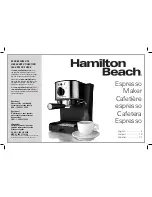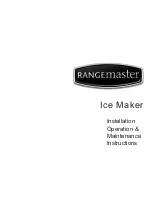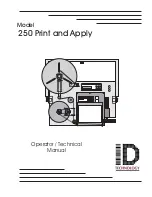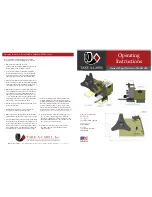
To Remove and Repair the Gearmotor
Assembly:
(Assuming that the procedures through removal of
the water seal have been performed.)
1. Remove the electrical wires from the gear drive
motor.
2. Unscrew the 4 cap screws holding the
gearmotor to the gearmotor plate.
3. Remove the gearmotor from the ice maker.
To Inspect the gearmotor.
A) Remove the cap screws holding the gearmotor
case halves together and pry the two cases apart.
B) To lift off the cover, lift up until you can feel
internal contact, then pull the cover towards the
output gear end, and then lift the cover (with drive
motor attached) up and away from the gear motor
case.
Note: The case cover output gear, bearings, and
shaft are one pressed together assembly.
Replace as a unit.
C) Inspect the oil, gears, and bearings. If the oil
level and condition is acceptable, quickly check
the gears and bearings. They are likely to be fine if
the oil is.
If there is evidence of water in the oil (rusty
bearings and gears; the oil having a creamy white
appearance; oil level too high) carefully inspect the
bearings and gears. If in doubt about the condition
of a part, replace it. The oil quantity is 16 fluid
ounces, do not overfill.
Note: The gears and bearings are available only
as pressed together sets.
D) After replacing parts as required, (if any)
reassemble the gearcase. The two smaller gears
and the oil should be in the lower case, the output
gear will be with the cover. As you lower the cover
onto the lower case, cover will have to be moved
closer to the second gear after the output gear has
cleared the second gear top bearing.
E) After the case is together, and the locating pins
are secure in both ends, replace all cap screws.
4. Bench test the gearmotor, check for oil leaks,
noise, and amp draw.
REMOVAL AND REPLACEMENT: Gearmotor Assembly
CHARGING
CYLINDER
RECEIVER
FRONT SEATED
KING VALVE
SERVICE PORT
Charging Procedures
Extra care must be taken when recharging this
remote system. No liquid refrigerant may be
placed in the system at the compressor. DO NOT
use the access valves at the front of the unit for
weighing in the charge. All liquid refrigerant must
be weighed into the receiver through the “front
seated” king valve".
NM952R
November 1992
Page 35



































